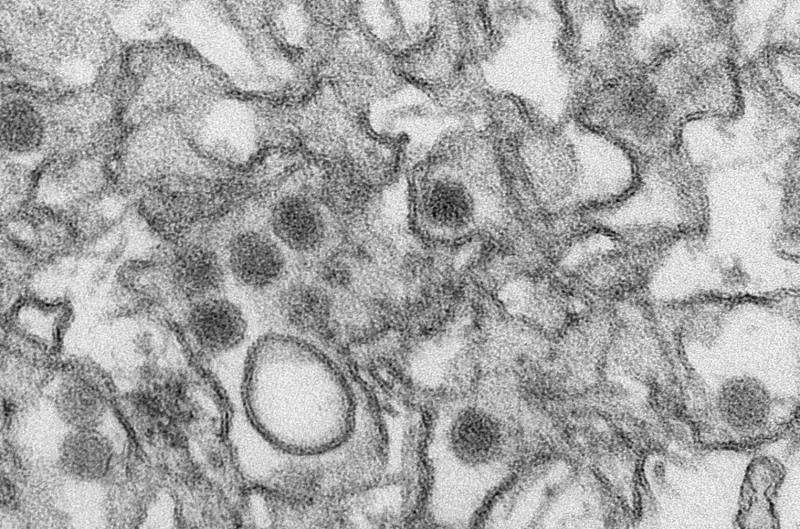Another study confirms link between Zika virus and fetal brain damage

A study led by Olli Vapalahti, professor of zoonotic virology at the University of Helsinki, Finland, has found that small amounts of genetic material from the Zika virus can be detected from a blood sample taken from a pregnant woman even weeks after the acute rash caused by the infection has passed, when the development of brain damage in the fetus is underway. Severe brain abnormalities can be detected through neuroimaging already at this early stage, even before the development of the intracranial calcifications and microcephaly previously associated with Zika virus infections.
The observations are based on the case of a woman infected while visiting Central America during her 11th week of pregnancy. This study is the first to report isolation of infectious Zika virus from fetal tissue in cell culture. The virus was isolated from fetal brain tissue in a cell line representing neural cell precursors. Researchers mapped the entire genome of the virus and discovered eight mutations, which distinguish this virus from the Zika strains previously reported in Central America. "Some of these mutations may be associated with the adaptations of the virus to the fetal brain," states Professor Vapalahti.
Overall, the results can help with the development of methods that would enable the detection of fetal damage associated with a Zika virus infection during pregnancy. "Our research also helps confirm the causal relation between the Zika virus and severe damage to the fetal central nervous system," Vapalahti points out.
The virus isolate from fetal brain can also serve extensively in experimental Zika virus research.
The Zika virus is a flavivirus spread by mosquitoes of the Aedes genus, first discovered in Uganda in the 1940s in conjunction with studies on surveillance for the yellow fever virus. Until the early 2000s, only sporadic reports on the Zika virus were available. Since 2007, the virus has caused extensive epidemics in Pacific areas, and in 2015, spread through Sourthern and Central America.
Zika virus causes rash and fever, symptoms typical of other virus infections, such as Dengue and Chikungunya, transmitted by mosquitoes. Even though a Zika virus infection is typically mild, reports in late 2015 indicated that the infection could also cause symptoms in the central nervous system, and that contagion during pregnancy could be associated with microcephaly in newborns. For this reason, the World Health Organization declared "Public Health Emergency of Internatioal Concern" due to the Zika virus epidemic, as it had previously done for the Ebola and swine influenza epidemics.
The recommended method for diagnosing a Zika virus infection during the first week of illness includes detecting viral RNA and, later, determining the presence of antibodies in blood samples. Pregnant women are recommended to undergo an ultrasound examination as well as a sampling of the amniotic fluid to determine the presence of Zika virus RNA.
The virological study was conducted by Professor Olli Vapalahti's research group at the University of Helsinki and HUSLAB (Zika virus research team Essi Korhonen, Suvi Kuivanen, Anne Jääskeläinen, Teemu Smura, Lev Levanov) in cooperation with researchers and clinics from the USA (including Johns Hopkins University, George Washington University, the Children's National Medical Center in Washington, DC, and the Arboviral Disease Branch of the Centers for Disease Control).
The study is published in the New England Journal of Medicine.
More information: New England Journal of Medicine, dx.doi.org/10.1056/NEJMoa1601824
















